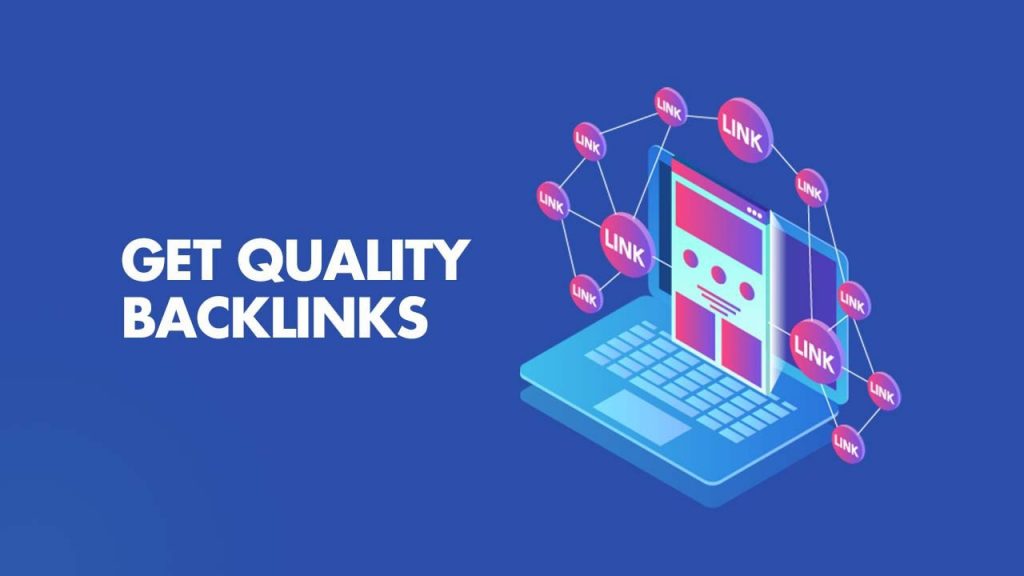Are you tired of browsing the internet for hours, struggling to find ways to improve your website’s SEO? Look no further! In this comprehensive guide, we’ll show you how to build high-quality backlinks that will make a significant impact on your search engine rankings. From understanding what backlinks are and why they matter, to exploring various link building tools and techniques – we’ve got you covered. Bring out the big guns and get ready to take your website’s SEO game to the next level!
What are High-Quality Backlinks?
In order to improve your website’s search engine optimization (SEO), it is important to understand and create high-quality backlinks. Backlinks are incoming links to a website. The more high-quality backlinks a website has, the higher its ranking will be in search engine results pages (SERPs). In other words, backlinks are one of the many ways Google determines which websites are most relevant and useful for particular searches.
There are several key factors that make a backlink high quality:
-The link comes from a trusted source: Trusted sources are websites that have been around for awhile and have a good reputation. They usually have high organic search traffic and low bounce rates.
-The link is relevant to the website’s content: A link is only considered high quality if it leads users to relevant and useful information. For example, if you have a website about car parts, a backlink from an auto body shop would be considered more relevant and useful than a link from a cooking blog.
-The link uses anchor text that is keyword rich: Anchor text is the visible text that hyperlinks use to lead users to another page or website. Using keywords in anchor text helps tells search engines what your website is about, which can improve your chances of ranking higher in SERPs.
Creating high-quality backlinks can be difficult and time-consuming, but it’s worth it if you want to improve your SEO. There are a variety of ways to get high-quality backlinks, including guest blogging, broken link building, directory submission, and outreach. Investing time and effort into building high-quality backlinks can help your website become more visible in search engine results pages and can result in higher organic traffic.
Benefits of High Quality Backlinks

There are many benefits to building high-quality backlinks. Below are some key benefits:
1. Improve Rankings in Search Engines: High-quality backlinks will help your website rank higher in search engines. This is because search engines use backlinks as a ranking factor. The more backlinks your website has, the higher it will rank.
2. Drive Traffic to Your Website: Backlinks can also help drive traffic to your website. When people see your website listed on other websites, they will be more likely to visit your site. This can increase your website’s traffic and visibility.
3. Builds Authority and Trust: By having high-quality backlinks from reputable websites, you can build trust and authority for your own website. This will help you attract more customers and clients, as well as improve your search engine ranking.
4. Helps With Link Juice: Link juice is a term used to describe the power or value that a website passes on to another site when it links to them. When you have high-quality backlinks from websites with strong link juice, this can help improve the link juice of your own website, making it more valuable in the eyes of search engines like Google .
5. Can Increase Sales and Revenue: Ultimately, the goal of any business is to make money and increase sales. If you have a website that sells products or services, then high-quality backlinks can help increase sales and revenue.
How to Build High-Quality Backlinks
There are a few key things to keep in mind when building backlinks if you want them to be high-quality:
-Relevancy: Links from websites that are related to your industry or niche will be more valuable than those from unrelated sites.
-Authority: Links from well-established and respected websites will be more valuable than those from lesser-known sites.
-Anchor text: The linked-to text (or ‘anchor text’) should be relevant to your website’s content.
Here are some specific techniques and tools you can use to build high quality backlinks:
1. Identify target websites. Make a list of potential websites that you would like to get links from. To do this, you can use a tool like Moz’s Open Site Explorer or Google’s Search Console. Look for websites with good link profiles and high PageRank scores.
2. Research the target website’s linking requirements. Some websites will have specific guidelines for how they want you to request a link. Read these carefully so that you don’t waste your time or theirs by submitting a request that doesn’t follow their rules.
3. Create content that targets their audience. Once you’ve identified potential linking opportunities, it’s time to create content that their audience will find valuable. This could be an infographic, blog post, video, or anything else that would be useful to their visitors.
4. Reach out and request the link. Once you’ve created great content, it’s time to reach out and request the link. Make sure that you explain why your content would be a valuable resource for their audience and follow any guidelines they have for link requests.
5. Monitor and measure results. As with any marketing effort, it’s important to track your results and adjust your strategy accordingly. Monitor metrics such as click-through rates, conversions rates, and referral traffic to gauge the success of your backlink campaigns.
Tools Used For Link Building
There are many tools available to help with link building, and which ones you use will depend on your specific needs and goals. Some common link building tools include:
• Link research tools: These tools help you find potential link partners and track your competition.
• Link analysis tools: These tools help you analyze the links you have and identify ways to improve them.
• Link building software: This software automates the process of link building, making it easier and faster.
• Backlink checkers: Thesetools help you monitor your backlinks and ensure that they are high quality.
Analyzing Your Link Profile
When you’re first starting out with link building, it’s important to spend some time analyzing your link profile. This will give you a good idea of where your site is currently at in terms of link quality and quantity, and can help you identify any areas that need improvement.
There are a few different ways to go about this. One option is to use a tool like Moz Open Site Explorer or Majestic SEO. These tools will give you an overview of your backlink profile, including the quantity and quality of links pointing to your site.
Another option is to manually review your links using Google Search Console or a similar tool. This approach takes more time, but it can be helpful in identifying low-quality or spammy links that you may want to disavow.
Once you have a good understanding of your current link profile, you can start working on building new and better links. This process can be slow and difficult, but it’s worth the effort if you want to improve your site’s visibility and organic search traffic.
The Do’s and Don’ts of Link Building
When it comes to link building, there are a few things you should definitely do in order to see success. First and foremost, always focus on quality over quantity. It’s better to have a smaller number of high-quality backlinks than a large number of low-quality ones. In addition, try to diversify your link sources as much as possible. This means getting links from a variety of different websites, rather than just a few. Make sure your links are relevant to your site’s content. Having random links that don’t really fit with what you’re talking about will not only look bad to visitors, but can also get you penalized by Google.
On the other hand, there are a few things you should avoid doing when it comes to link building. One major no-no is known as “link buying.” This is when someone pays for links in an attempt to artificially inflate their website’s popularity. Not only is this against Google’s guidelines, but it can also result in harsh penalties if you’re caught. Another thing to avoid is using low-quality directories or article farms for link building. These sites are often filled with spammy or irrelevant content, and can actually hurt your SEO efforts instead of helping them. Steer clear of anything that could be considered “black hat” SEO tactics. This includes practices like keyword stuffing or hidden text/links . Google may penalize you if they catch you using these tactics.
Alternatives to Link Building Strategies
There are many ways to build backlinks, but not all of them are effective. In this guide, we’ll show you some of the best link building strategies that will help you improve your SEO and get more traffic.
1. Guest blogging
Guest blogging is a great way to build links from high-quality websites. You can find guest blogging opportunities by using Google search operators such as ‘guest post’ or ‘write for us.’
2. Broken link building
Broken link building is a process of finding broken links on websites and replacing them with your own links. This is an effective way to get high-quality backlinks from authority websites.
3. Directory submissions
Directory submissions can be a good way to build links, but you need to be careful not to spam directories with low-quality or irrelevant listings. If done correctly, directory submission can be a valuable part of your link building strategy.
4. Social media promotion
Social media platforms such as Twitter, Facebook, and LinkedIn are great places to promote your content and build links. You can use social media to share your content, engage with other users, and drive traffic to your website.
Conclusion
Building high-quality backlinks should be a part of any comprehensive SEO and link building strategy. Quality backlinks can help to improve your website’s visibility and reach, which in turn can lead to increased website traffic and higher conversions. The tools discussed in this article offer a range of options, allowing you to build the perfect linkbuilding campaign for you based on your needs and resources. With the right mix of tools, you’ll be able to create an effective SEO strategy that will get you the results you want.


